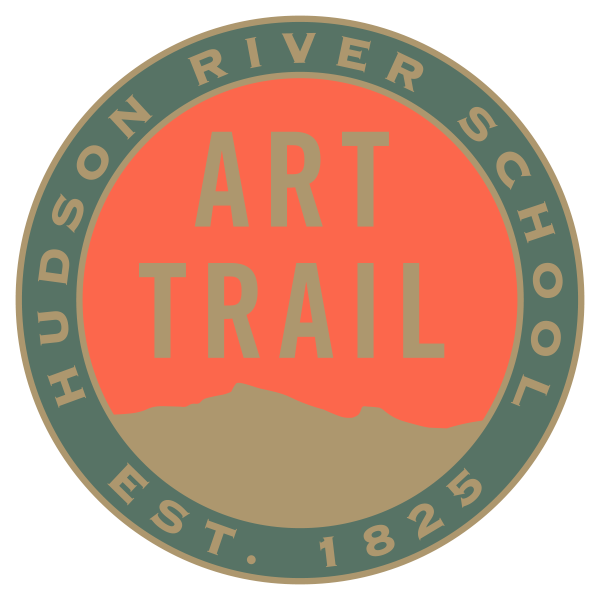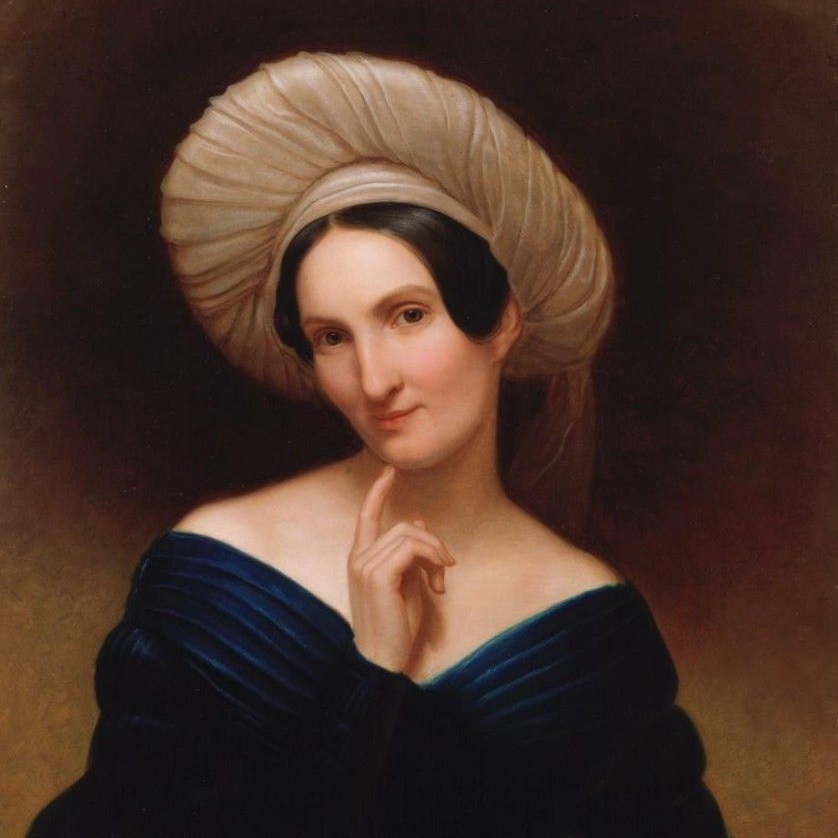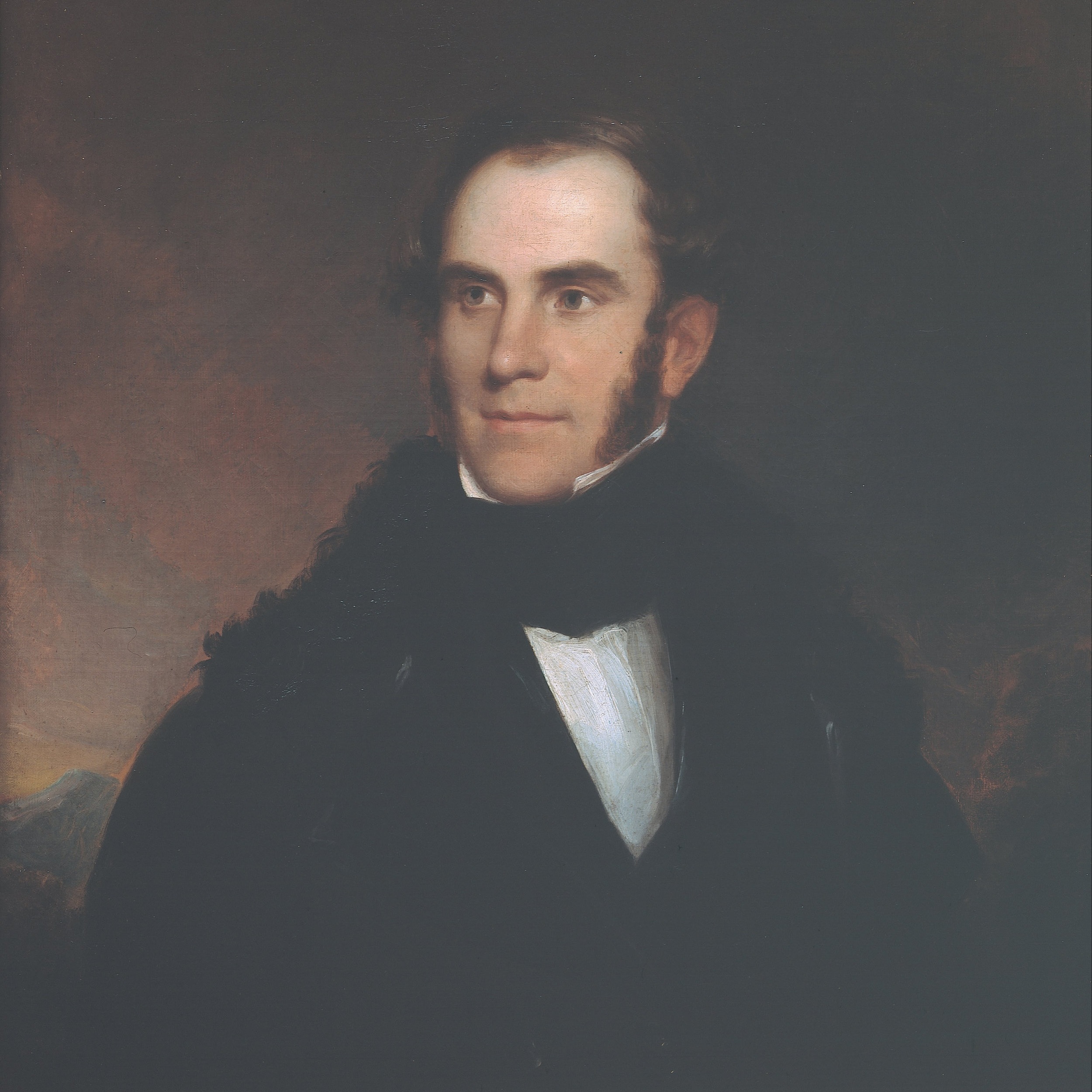Meet the artists of the Hudson River School and visit the places in nature that they painted and made famous.
Susie M. Barstow (1836-1923)
Hudson River School painter working from the mid-19th into the early 20th century. Barstow received training and education at the Rutgers Female Institute and the Cooper Union. She quickly attained recognition in the growing post-Civil War art market, exhibiting her work alongside other respected artists of the time. Barstow was an avid hiker and traveler who painted compositions of the Catskills, the White Mountains, Yosemite, the Alps, Venice, Mount Fuji and Cairo, Egypt. Barstow was an active member of the Appalachian Mountain Club, the Cosmopolitan Art Association, taught as a member of the faculty at the Brooklyn Institute of Arts and Sciences, and served on the committees which established the Brooklyn Museum of Art.
Visit the place that Barstow painted on the Art Trail:
Photograph: Unidentified Photographer, Portrait of Susie M. Barstow, ca. 1870, tintype, 5 ½ x 4 in., Private Collection.
Charles Herbert Moore (1840-1930)
American Pre-Raphaelite painter, and later, professor of fine arts at Harvard and the first director of the Fogg Art Museum. At the age of eighteen, Moore had already taught drawing and painting at New York University and exhibited paintings at the National Academy of Design. Although it seems that Moore may have disliked Cole's romantic style, he became close friends with Cole's youngest son, Thomas Cole II, and moved to Catskill in 1865. There he designed and built his own house, The Lodge, and painted the surrounding Catskill scenery. Moore was also known for his writings on Gothic and Renaissance architecture.
Visit the place that Moore painted on the Art Trail:
Photograph: Charles H. Moore (detail), date unknown, Smithsonian American Art Museum
Harriet Cany Peale (1799-1869)
Harriet Cany Peale shared a Philadelphia studio with her husband, Rembrandt Peale (1778-1860), the well-known portrait and historical genre painter (she was his second wife), and exhibited throughout the 1840s, 50s and 60s at the Pennsylvania Academy of Fine Arts. Peale was primarily known as a portrait and still life painter, but with Kaaterskill Clove, shows herself to have been a masterful landscapist with an interest in iconic subject matter.
Excerpted from Jennifer Krieger, Remember the Ladies, 2010
Visit the place that Peale painted on the Art Trail:
Painting: Rembrandt Peale. Portrait of a Lady (Harriet Cany Peale) (detail), ca. 1840, oil on canvas, mounted on panel, Chrysler Museum of Art.
Jasper Francis Cropsey (1823-1900)
Hudson River School painter and architect, who studied at the National Academy of Design in the 1840s. The work of Thomas Cole and Asher B. Durand had a great impact on Cropsey, who often painted similar locations in New York, such as in Catskill Mountain House (1855) and Autumn on the Hudson River (1860). Like Frederic Church, Cropsey designed and built his own house and studio, named Aladdin, located in Warwick, New York. The house proved too costly to maintain, and Cropsey moved to Ever Rest in Hastings-on-Hudson where he adapted the Aladdin design into a studio addition. Ever Rest, like Cedar Grove and Olana, is now open to the public.
Visit the places that Cropsey painted on the Art Trail:
North-South Lake
Sunset Rock
Catskill Mountain House
Jasper Cropsey Home and Studio
Painting: Edward L. Mooney, Jasper F. Cropsey at age 24 (detail), 1847, oil on canvas, 31 x 26 in., Collection of the Newington-Cropsey Foundation.
Frederic Edwin Church (1826-1900)
Hudson River School painter and student of Thomas Cole. In 1844, Daniel Wadsworth wrote to Cole, asking him to take the promising Church as a pupil. Church proved his worthiness, and within a year he was exhibiting landscapes at the National Academy of Design alongside his teacher. Church became famous for his monumental paintings of South America, exhibited to much excitement and acclaim in 1855. In 1860, Church bought a tract of land overlooking the Hudson River not far from Cedar Grove, now the Thomas Cole National Historic Site. He began building Olana, a "Persian"-style home that he largely designed himself. Olana is now a National Historic Landmark and open to the public. Church was devastated by Cole's sudden death in 1848; that year he painted To The Memory of Cole and taught Theodore Cole to farm and maintain Cedar Grove so that he could provide an income for Cole's widow, Maria Bartow, and their family.
Visit the places that Church painted on the Art Trail:
Catskill Mountain House
Catskill Creek
OLANA
Kaaterskill Falls
Hudson River Skywalk
Thomas Cole Historic Site
Painting: Edward Harrison May, Portrait of Frederic Edwin Church (detail), date unknown, oil on canvas, National Academy of Design
Emily Cole (1843-1913)
Though not a Hudson River School artist, Emily Cole was an accomplished painter of flora on paper and porcelain. Daughter of Thomas Cole and Maria Bartow, she lived and worked at Site #1 where her father lived and painted. She used Thomas's New Studio as her studio and exhibition space. Most of her painted blooms were flowers local to Catskill, ones she could observe firsthand, from spring through fall, by simply stepping outside her front door. Referred to as “Catskill China Painter,” Emily Cole connected with collectors and patrons who purchased her work in the Hudson Valley, Brooklyn, and beyond. She even served as a charter member of the New York Society of Ceramic Arts, founded in 1892 with the objective to promote the appreciation of ceramic arts.
Visit the place that Emily Cole painted on the art trail:
Thomas Cole National Historic Site
Image: Unknown photographer, Emily Cole (detail), unknown date. Carte de visite photograph in album, Thomas Cole National Historic Site.
Sarah Cole (1805-1857)
Sarah Cole was an American landscape painter and the sister of Thomas Cole. Although she did paint some original compositions, many of Sarah Cole’s surviving paintings are copies of her brother’s paintings, including her painting View of Catskill Mountain House. Sarah almost certainly knew the Catskill Mountain House firsthand since she and Thomas often ventured into the mountains. In 1838, Thomas recorded in his journal that he and Sarah went hiking with others in the Catskills and camped on the summit of High Peak. Sarah exhibited her paintings regularly at the National Academy of Design and the American Art-Union. Living in Baltimore, she also exhibited at the Maryland Historical Society. In 1839, Sarah took an interest in learning the art of etching, and based on a letter written by her brother, she may have had some instruction from Asher B. Durand, who worked primarily as an engraver and etcher before turning to painting. None of Sarah’s etchings are known today, but three did appear in an 1888 exhibition at the Union League Club in New York City, long after Sarah’s death in 1857.
Excerpts from the Albany Institute of History and Art
Visit the place that Sarah Cole painted on the Art Trail:
Drawing: Thomas Cole, Sketch of Sarah Cole (detail), date unkown
Sanford Robinson Gifford (1823-1880)
Hudson River School painter and member of the National Academy of Design, where he took drawing lessons as a young aspiring artist. Like Asher B. Durand, Gifford turned from portrait to landscape painting after going on several sketching trips to the Catskills. Gifford may be considered a second-generation Hudson River School painter, turning away from Cole's dramatic painting style in favor of a more subdued approach. A classic example of Gifford's luminist work is Kaaterskill Clove (1862). See Sanford R. Gifford.
Visit the places that Gifford painted on the Art Trail:
Hudson River from Croton Point Park
Kaaterskill Falls
Painting: Eastman Johnson, Sanford Robinson Gifford (detail), 1880, oil on academy board, Gift of Richard Butler, 1888, The Metropolitan Museum of Art, 88.16.
Thomas Cole (1801-1848)
Founder of the Hudson River School of painting. Thomas Cole was born in 1801 at Bolton, Lancashire in Northwestern England and emigrated with his family to the United States in 1818. In 1825, Cole discovered the haunting beauty of the Catskill wilderness. His exhibition of small paintings of Catskill landscapes came to the attention of prominent figures on the New York City art scene and his fame spread. Shortly after returning from a visit to Europe in 1832, Cole established his rural studio in Catskill, New York, when he rented a small cottage at Cedar Grove, now the Thomas Cole National Historic Site. On November 22, 1836, Thomas Cole and Maria Bartow, niece and ward of the owner of Cedar Grove, were married in the West Parlor of the Main House, which became Cole's home. In March of 1839, Cole began work on four paintings to be called “The Voyage of Life”; for Samuel Ward, a wealthy banker and philanthropist. These paintings, along with the five-painting series, “The Course of Empire”; would become some of his best known and loved works. Thomas Cole died at Cedar Grove on February 11th, 1848.
Visit the places that Cole painted on the Art Trail:
Albany from the East Side of River
Catskill Creek
Kaaterskill Falls
Catskill Mountain House
Sunset Rock
Kaaterskill Clove
Mohonk Lake
Hudson River Skywalk
The Oxbow
Storm King from Long Dock Park
Crawford Notch Across Saco Lake
North-South Lake
Painting: Asher B. Durand, Portrait of Thomas Cole (detail), 1838, oil on canvas, 30 1/4 x 25 in., Gift of Zenas Crane, 1917, Berkshire Museum, Pittsfield, MA.
Asher B. Durand (1796-1886)
American engraver, portraitist, and Hudson River School landscape painter who, along with John Trumbull, bought one of Cole's paintings in 1825. Durand, Cole, and poet William Cullen Bryant maintained a close friendship throughout their lives, joined by their mutual involvement in American arts and culture. Durand helped to found the National Academy of Design, acting as its president from 1845-61. It was Cole who first persuaded Durand to begin landscape painting and taught him how to sketch outdoors, and together the two artists took many summer sketching trips to the Catskill, White, and Adirondack mountains. Durand painted Kindred Spirits (1849) after Cole's death, forever memorializing the friendship of the three men. See John Trumbull, Asher B. Durand and Asher B. Durand.
Visit the places that Durand painted on the Art Trail:
Platte Clove
Kaaterskill Clove
Painting: Asher Brown Durand, Self-portait, 1835, oil on canvas, 30.1 x 25.2 in., gift of Asher B. Durand 1852, National Academy of Design.










